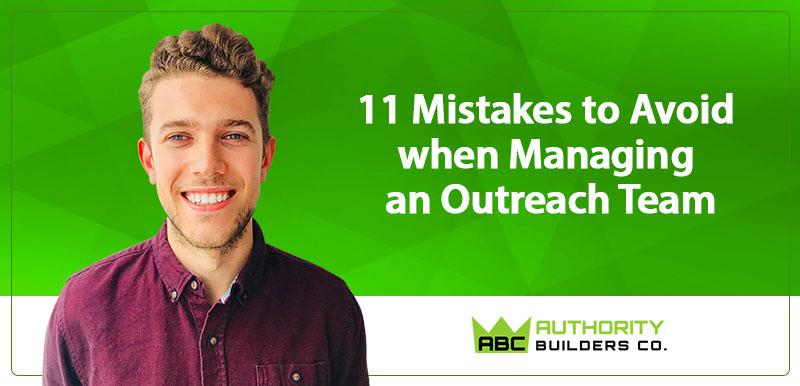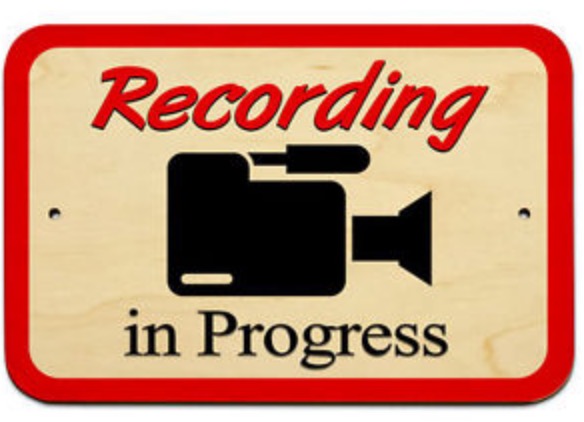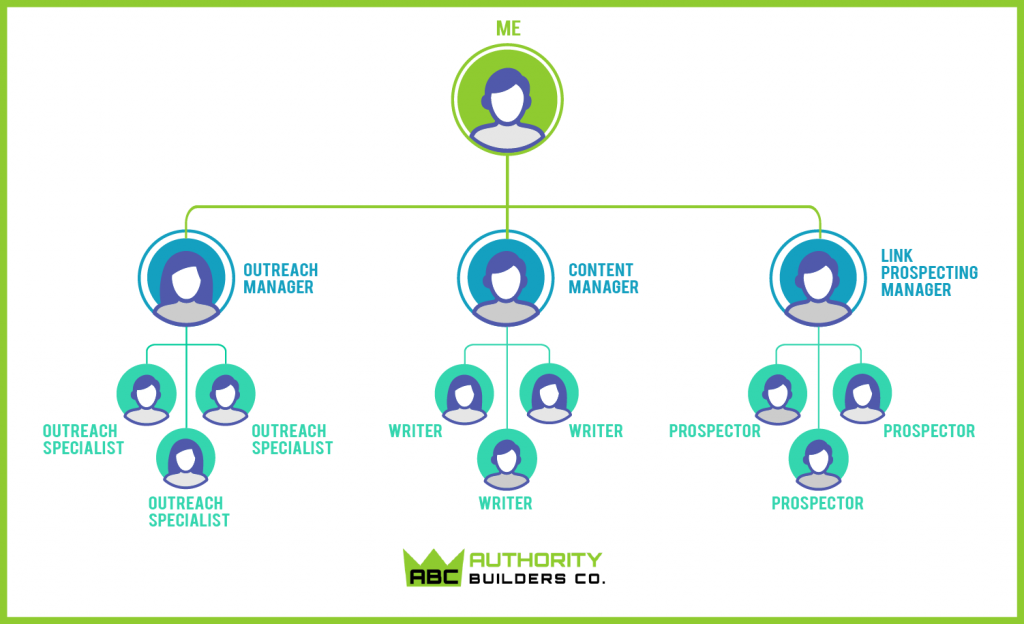
You’re going to have to learn how to put together great outreach teams if you want to build strong links and develop valuable relationships with the other people in your niche.
If you’ve tried putting good outreach teams together before, I don’t have to tell you that it’s not that easy. Trust me, I know. I’ve been managing outreach and outreach teams for years now. I’ve made most of the mistakes that it’s possible to make.
But on the plus side, that means I’ve finally figured out where all the pitfalls are. In this guide, I’m going to show you all of them.
I’m going to teach you what not to do when building out your training documents, hiring and guiding your people and managing your tools and assets. By the end, you’re going to learn how to hop over all of the mistakes I made so that you can build a perfect team the first time.
Nothing happens until you have a clear process. So the first mistake is simply not doing that.
1. Not Building A Clear Process
Every successful effort starts with a plan, and when it comes to outreach, you want one that meets several criteria. It has to be easy to understand (especially if you’re passing it off to staff), it has to cover each possible step and it has to be easy to repeat.

For my own team, the basic process for guest posts goes a little something like this…
- Build a list of websites
- Find their email addresses
- Contact them
- Review the site make sure it passes verification* (This step can be done after the first)
- Haggle prices
- Write the content
- Send the content off
- Verify the content goes live
- Ensure the blogger gets their cheddar
There may be reasons that you have to go with a different process, but no matter what it is, get it in writing.
This will give you a plan of attack, and something to compare against the messier process of getting things posted in the real world. After you have a plan, develop it into complex training materials such as procedures and training videos.
You can always add extra steps later if you find out that certain tasks come up a lot more often than you expect.
Of course, you don’t want to just repeat a substandard process over and over. Your next step is to step up tracking so that you can truly measure what’s working.
BONUS: Free Guide on How to Scale Outreach for your Agency
2. Not Tracking Data and Drawing Statistics
How much you can improve your first plan (which might not be the best) is going to depend on how effectively you’re tracking your data. Without tracking data, you could be stuck with a plan that’s not worth its budget, and doomed to fail.
In my campaigns, I’ve started tracking all of the following against my performance in the previous cycle…
- How many sites were identified?
- How much contact information was collected?
- How many sites are emailed?
- How many of those emails got replies?
- How many of the responding sites did we agree to work with?

This information is pretty easy to track with just an excel sheet, but it’s even easier if you use an email platform like Pitchbox that will track it all for you.
When you measure the sum of the first item against the sum for the last one, you get your conversion rate. To break it down a little further—
If you email 100 websites a week, with 15 replies and 3 placements, then you know that your conversion rate is 3%. Now, let’s assume you have a much more ambitious goal than that, like 60 new links per month.
If you take that number and divide by your conversion rate, you know how much you need to multiply your efforts. In this case, by 20.
20 x 100 (the number of sites you reached out to in your first run) is going to be 2000 sites. Assuming your conversion rate holds (or better yet, you can improve that, too), that’s how many sites you’ll need to reach out to in order to hit your goal of 60 new links.
When you have this data and you’re tracking it, it’s very easy to work out what it’s going to take to scale your team and hit your goals.
That’s not all the tracking you’re going to want to do, though. You need to make sure you’re also tracking all the work you’re doing so the process works at all.
3. Not Properly Recording Actions
You need to keep track of a lot of actions if you want your outreach process to go smoothly.
For example, it’s very easy to lose track of which webmaster agreed to what price, or what contact information for them is correct.
The spreadsheet or tool you use to keep track of all these actions needs to be adopted very early before there’s a chance that losing track of them will grind your outreach process to a halt.

Once you’ve chosen how and where the information will be recorded, start tracking all of the following…
- When you found the website
- When you emailed the website
- Who sent the original outreach to the website
- Who handled the reply
- How soon the reply was sent
This is only a starting list. The truth is, you’re going to find a lot more to record as you continue to develop your process. The more effort you put into tracking different actions, the easier it will be to improve on them.
Once you’ve eliminated the risk of tripping over missed information, you should consider some of the ways you could fall short despite great data-keeping. First, by failing to hire people who won’t excel at the work.
4. Not Hiring Based on Key Competencies
Placing links can be really expensive, and that can encourage you to cut costs in other areas. Staffing isn’t really an area where you can go too cheap. The people doing the outreach will be making your first impression for you, and form emails will only take them so far.

Start with a strong hiring process. You want to ask each person…
- Have you worked as a VA before?
- Are you familiar with spreadsheets?
- Can you speak/write English at a college level?
- Have you done similar work before?
The person who can answer yes to all these questions will be a lot easier to train. In fact, they’ll probably be able to hit the ground running. Still, make sure that you tell them exactly what you need from them for each step.
After that, manage them to avoid burnout. Most staff will burn out if their sole job is to find new leads 8 hours a day.
Give them a different task after 4 hours or alternate their task every 30 mins.
Once you have a good process and good people, your future expansion is going to depend on getting them to deliver their best and get better. That’s going to take setting some vital Key Performance Indicators (KPIs).
5. Not Setting KPIs for Your Staff
Each role in the outreach team should have its own KPIs. This helps to establish expectations and gives you something to measure future performance against from campaign to campaign.
The best KPIs for your team may be determined by unique factors, but some roles tend to be universal across outreach projects. I recommend that for each of the following roles, you consider the corresponding indicators.

Prospectors: Eligible websites, how many sites are they looking for?
Content Writers: QA on good titles, solid link placements, quality content, authority links, inner links
Emails Handlers: How many emails should they be replying to a day?
Start with high standards and use the data you record to push your team to do even better. When practical, work with them one-on-one to get better insights into which KPIs can be improved and how.
Even a great team can collapse into confusion and infighting if you make the next mistake: Not establishing a clear chain of command.
BONUS: Free Guide on How to Scale Outreach for your Agency
6. Not Establishing a Clear Chain of Command
A great outreach process shouldn’t take up too much of your time. Your reward for taking the time to find great people is being able to rely on them.
At Authority Builders, we’ve done excellent things with a structure like this one:

Once you’ve set up a clear hierarchy, you only need to speak to a single person to make sure that a new direction gets all the way down the chain. This will save you a lot of time. After all, no one enjoys the whack-a-mole game that is responding to 20 people.
Of course, a hierarchy isn’t that much use to you if you play an outsized role in it. The next mistake comes when don’t utilize your command chain by failing to delegate.
7. Not Delegating Decisions that Don’t Need You
There’s nothing wrong with being really invested in the success of a project. However, there does come a point when your attention comes at a cost to you, especially if you’re already budgeting a significant amount to good staff.
Once you’ve trained your staff to your satisfaction, you should have the confidence to turn the reins over to a manager. Fully extract yourself from all the decisions that don’t require your immediate input.

Yes, your staff will still make mistakes. No, they won’t be as attentive or as experienced as you, at least at first. But eventually, they WILL get better than you at the task since they’re working at it ALL the time. Be patient, and you’ll be rewarded for it.
Of course, the best staffing in the world won’t help you if you paint yourself into a corner where you can’t afford them. The next mistake you can make is not budgeting correctly.
8. Not Budgeting Correctly
I must emphasize again how important it is that you record data properly. In this case, your costs.
There are a lot of moving parts in an outreach campaign, and the budget for any one of them can start to spiral out of control and tank the project. Before you begin charging anything, you should estimate all your costs and place limits on how much each part of the project is worth to you.

Here are some of the necessary costs that you should consider, and should be estimating and tracking from the start.
- Outreach staff
- Subscriptions/purchase costs for any systems you use e.g ninja outreach / mailjet
- Content costs, both for production and placement
- The total average costs per link
In the short term, tracking these costs will help you determine where to prioritize your efforts to improve. They’re even more important in the long-term, though. Use this data to determine how much further you can go when you scale up.
For example, based on the last month of outreach, what will it cost you to double your efforts? Or triple them?
A strong budget will help you deliver quality at cost, but quality itself can be a difficult thing to control. If you want to build a reputation and better your conversion rate, you’re going to need to have a strong QA process in place.
9. Not Having an Eagle-Eyed QA Process
Ever checked a live URL only to realize an obvious mistake was missed? That’s never a good feeling. While it’s not always difficult to contact the webmaster and have the post updated, that’s still time used, and therefore a cost that you didn’t predict.
That’s why your team should include a few people who focus exclusively on quality assurance. Having team members in place to handle QA exclusively will create necessary accountability that you can use to prevent errors in the future.

To help you out, here are some selections from the list that my team uses before any content is sent out to a blogger.
- Have we included the images?
- Have we included high DA relevant links?
- Is the anchor text naturally placed?
- Does the URL have the correct anchor text?
Make sure that the checklist you create for your own team includes any other quality points that match your brand identity.
If you care about your reputation, there’s another area where you need to keep your eyes peeled. Few mistakes come across as sketchy to bloggers as suddenly being unable to communicate with your original email address.
BONUS: Free Guide on How to Scale Outreach for your Agency
10. Not Protecting Access to Your Email/Assets
You may need a series of email addresses to manage your outreach campaign. A lot of novices will use a Gmail account because it’s free and easy to set up. There is a downside, though: it’s easy to get banned.
Google is highly suspicious of accounts that deal with a large volume of sent mail, say 500 a day or more. They don’t want spammers on their platform, and they may ban you with no questions asked and no appeal process.
For the sake of appealing, you should invest in a Google Suite account if you insist on using Gmail. That way, you can approach them and ask them to unfreeze. Of course, you can consider yourself watched after that point. Google won’t need much of an excuse to ban you again.

Beyond Gmail, a more industry-friendly service like Mailjet or Sendgrid may be the better bet for ensuring the email gets delivered.
Honestly, though, you should be doing most of your outreach with a proper website email such as [email protected]. Even better, create a cheap web page and domain to act as a pretend agency. Use this address to contact people instead of the address from the site where you’re building out the links.
Ensuring that your email reaches webmasters is only half the battle though. You also have to ensure that email isn’t going to immediately turn them off.
11. Not Giving Webmasters a Reason to Like You
There are a lot of ways to turn webmasters against you, even when you think you’re just reasonably keeping the process moving.
For example, if you don’t get a reply and you follow up too quickly (I’ve seen some outreach emails that gets repeated after only 12 hours), you could get blocked entirely. Remember, these people are humans and they are probably comparing your emails to hundreds they get per day.

I use this list of “do” and “don’t” to help my outreach team stay on the good side of the people they contact.
Do:
- include their name
- add a personal touch
- give them a compliment
- make sure your email is well written; no typos!
- include a footer with an image and real links to things; this tends to help with deliverability.
Don’t:
- Spam them with messages
- Call them the wrong name
- Assume they owe you something just because you have content related to their website.
After the initial outreach, it’s important that you’re particularly sensitive to the needs of people who have responded to you. This is only going to be a fraction of the people you’ve sent outreach to, so treat them like a valuable resource and be willing to accommodate.
Protect Yourself from Costly Mistakes

If you can avoid these mistakes, you will be well on your way to making your first outreach campaign a successful one. Now, you understand the best ways to track the data, to build out sustainable processes and to manage hand-picked team members.
Now you can expect to do more than avoid the traps—you can thrive.
If you have any questions, what-so-ever, click this link to join the conversation on Facebook.
